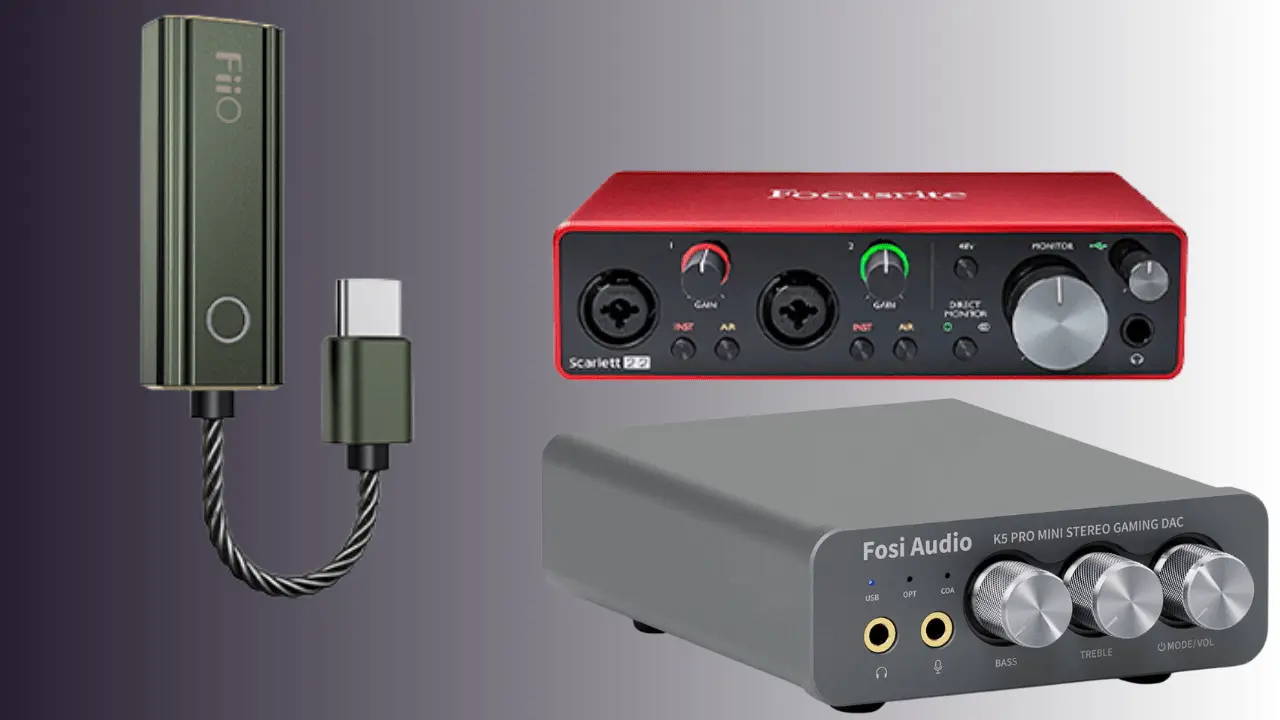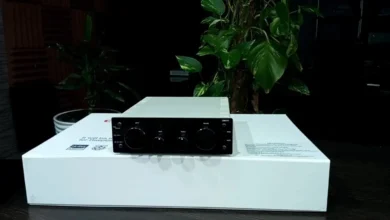How to choose an audio DAC

DAC has been popping up in every discussion about high fidelity for a few years. But what is a DAC?
DAC stands for Digital to Analog Converter,” which brings together the family of devices capable of taking a digital audio source, decoding it, and converting it into an analog signal. In a world where music is mostly consumed digitally – music files stored on a computer or smartphone, online music or even CDs, for example – DACs are essential for reproducing sound that will inevitably end up in a speaker, which operates in an analog manner.
Importance of DAC
As mentioned above, all digital sound will necessarily end up in an analog speaker before, of course, ending up in the human ear. In concrete terms, this means that many devices we use today have a built-in DAC. For example, computers and smartphones with a headphone jack would not work without an internal DAC to transform the sound of your digital music files into an analog electrical signal to power your headphones. The same goes for CD players. Between the optical (digital) reader that decodes the information on your compact discs and the RCA audio output (analog) that allows you to connect your CD player to an amplifier, you need, you guessed it, a DAC.
What is the hi-fi DAC used for?
Since the advent of digital music, we have been looking to improve its sound. When the CD was marketed in the 80s, many criticized it for having a cold and aggressive sound, far from the warmth of a vinyl record. Why? However, the CD was technically more precise on paper than vinyl. The DACs of the time struggled to convert digital files properly, which could then cause irregular reading errors commonly called jitter. Of course, these errors are difficult to discern when listening to a song, but they will cause an unpleasant sound.
Over the years, manufacturers of high-fidelity products have investigated this issue and gradually improved the DACs built into CD players. At the turn of the century, when music lovers began listening to music from computers and the first portable MP3 players appeared, the usefulness of DACs became even more meaningful. They would then become a must-have for the future of music.
Today, we consume digital music in many ways. In hi-fi, music is now in high resolution. Better quality DACs are then necessary to be able to decode our favorite albums and meet our highest expectations.
But not all DACs are created equal, far from it! Do you think that the DAC built into your smartphone, which must cost only a few dollars to produce, is equivalent to the hi-fi DACs that sell for hundreds or even thousands of dollars? No, not. A smartphone DAC will be enough for a pair of small headphones, but just plug your phone with a “mini-jack to analog RCA” cable into your stereo and you will understand that it will not be able to offer you acceptable sound.
Then, play the hi-fi audio DACs. Designed to reproduce the sound of digital sources (computer, smartphone, streaming ) by enhancing the quality of listening on a high-fidelity system, they are made of the best electronic components used for sound processing. Capable of deciphering the most popular hi-res files (FLAC, ALAC, AIFF, WAV, DSD), they are designed to eliminate the reading errors ( jitter ) that had put audiophiles off CD players in the mid-80s. Exit the icy sound! Enjoy digital in all its precision and warmth!
Using Your PC or Mac as a Music Source
The main attraction of a hi-fi DAC for many music lovers is to be able to use their computer (PC or Mac) as a music source. Once the computer is connected to the DAC with a USB cable, the DAC then takes over all the audio processing of the music files played by the computer. The sound card of the majority of personal computers sold is of poor quality, so it will not be used. Most DACs have a USB type B input (like for a printer). Your computer will recognize the DAC as a new sound card. Some will ask you to download an additional driver to optimize its operation.
Understanding the Sampling and Frequency Rate
There are two technical data associated with the performance of a DAC. The sampling rate, expressed in bits, will generally be 16 or 24 bits (and very rarely 32 bits). The standard frequency values, calculated in kilohertz, will be 44.1kHz, 48kHz, 88.2kHz, 96kHz, and 192kHz. As a reference, a standard audio CD offers a sampling rate of 16 bits and a frequency of 44.1kHz. Higher-quality files are available for download on specialized high-resolution music sales sites. The frequency and sampling will vary depending on the recording and mastering resolution of the albums offered. The majority of quality hi-fi DACs will be able to decode 24-bit/192kHz files and will perform an oversampling of lower files to improve their sound.
FAQs
Can I play MP3 files through DAC?
Yes, a DAC will be able to decode mp3 files. However, even if it can improve the rendering, it is still preferable to use higher-quality files for a true hi-fi experience.
What is the advantage of connecting my CD player to a DAC if it has a DAC too?
Unless you have a recent high-end CD player, the digital signal processing of a hi-fi DAC will be superior and will offer better precision, increased specialization, and additional sonic warmth. It is also necessary to put things into perspective, a high-quality CD player will have a better converter than a more affordable DAC. Since a high-fidelity system is a question of balancing its components, it is always advisable to base oneself on the technical specifications of the devices and to carry out comparison tests. We must not lose sight of the fact that the goal is to better appreciate music in all its splendor!
Can I connect my TV’s optical audio output to my DAC?
It is possible to connect your TV to an optical input of a DAC, but these generally cannot decode 5.1 signals. Optical outputs on televisions will also create a delay (a gap between the image and the sound) which can be annoying when watching a film or a TV show. Some TV models have settings that can overcome this problem.
However, it is advisable to connect your sources (Blu-Ray player, TV decoder) and adjust their audio settings to PCM 2.0 mode (stereo), which will eliminate the delays caused by the optical output of the TV.



